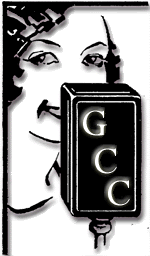Tactical Tuesday~What Do I Do With My NaNo Novel?
First things first~
Ding ding ding, we have a winner! While several guessers came in with the correct answer, there is one and only one prize--it goes to the guesser who sent her entry in FIRST. So many congratulations to women's fiction author Carrie Kabak, who correctly identified this beautiful art print by Susan Siegel~

~as a cross-section of undifferentiated stem cells. Carrie will receive a signed copy of The Bitch Posse for her correct guess~way to go, Carrie! And everyone else... thanks for playing!
And now on to Tactical Tuesday~

Here are a few pieces of advice that may help you in your quest to turn that first draft into something wonderful.
PRINT IT, READ IT, MAKE INITIAL NOTES ON IT
This may seem obvious, but if you are the parsimonious type, you may resist the idea of wasting precious paper on a first draft. Do it. You'll see things on the printed page that you won't see on that glowing screen. Plus, it adds portability to your manuscript... and personally, I love circling things and making notes on an honest-to-goodness draft. Sometimes I'll even cut pages apart and Scotch tape them elsewhere, just like in the good old days. A notebook for lengthier notes or new scenes is useful, too.
OUTLINE THE NOVEL
Does this sound crazy? After all, the novel's already completed. What would an outline accomplish?
Well, the second draft outline will help you see holes in the plot. It will help you see chapters where very little happens. To create suspense, you should end chapters with a question in the reader's mind--not necessarily a cliffhanger, since we aren't all writing thrillers--but at least a glimmer of curiosity: a reason to turn the page. Outline each current chapter from start to finish, and study your overall outline for any holes. You'll use this outline to revise and to cut or expand, as necessary.
CREATE CHARACTER PROFILES
Again, you're screaming WHAT? I did this already! Maybe you did. Or maybe, like me, you went flying blind. But things may have changed in the course of your novel. A character may have fallen in love with someone unexpected. She may have developed a weird hobby that you now need to research. Or in another case, he may just be boring. Now is the time to sharpen your characters. Create histories for them~old boyfriends, crazy teachers, individual quirks~even cut out photos from magazines, if you like, or sketch your character if your drawing skills go beyond stick figures (mine don't).
WORK ON THE SETTINGS
Some of the backstory in my W.I.P. (Work-in-Progress) takes place in Concord, Massachusetts. I've never been there, so I just jotted a reminder to myself in my notes that I need to research that place. When I revise my first draft, you can bet I'll be looking over Concord's town website, Googling for pictures, and speaking with my friend who lives near there. I did the same for Sault Ste. Marie, Michigan, in The Bitch Posse. Haven't ever been there. It might be the most fully-described place in the book, thanks to research and a personal friend who's lived in Michigan's Upper Peninsula (she knows who she is). Develop your settings. Learn far more than you really need to know. Then include the most interesting or evocative parts. You may cut them down in subsequent drafts, but that's okay.
SPELLING AND GRAMMAR
Obviously, spell check isn't enough. There are words like "then" and "than," "who's" and "whose," et cetera and so forth, that your computer's spell check just won't pick up. Is grammar not your strong point? Hand the draft off to a friend who can help you, or, better yet, learn it. A couple days with a good grammar guide will help you. (I still like the Warriner's I had back in junior high.)
WATCH FOR INCONSISTENCIES
Do a character's eyes change colors from the beginning of the novel to the end? (This often happens to me.) Does a character begin chapter 9 knowing a key fact, but in chapter 10 it seems to have completely disappeared? What about Aunt Winifred's cancer, which was a huge plot point early in the novel and is suddenly dropped? A read-through for consistency will help you catch these problems.
TRIM, TRIM, TRIM
See the most recent Tactical Tuesday post about overwriting. Watch for it. Then condense. Some other ways to condense, as well as to add impact, are to lose the passive voice and go "ly" hunting. More on this next week!
CHANGE FONTS
It sounds nutty, but you'll catch errors, repeated words or phrases, all kinds of things that you didn't see when your novel was printed in your first choice of font.
BE PATIENT
This editing thing takes time. I hate to tell you this, but done properly, it may take more time than hammering out that rough draft. (Unless you're an edit-as-you-go person... then you're way ahead of the rest of us. Personally, I can't work that way.) Probably, it will take more than one draft. That's OK. In fact, you'll find your novel far richer for the amount of work you put into editing.
Ding ding ding, we have a winner! While several guessers came in with the correct answer, there is one and only one prize--it goes to the guesser who sent her entry in FIRST. So many congratulations to women's fiction author Carrie Kabak, who correctly identified this beautiful art print by Susan Siegel~

~as a cross-section of undifferentiated stem cells. Carrie will receive a signed copy of The Bitch Posse for her correct guess~way to go, Carrie! And everyone else... thanks for playing!
And now on to Tactical Tuesday~

What Do I Do With My NaNo Novel?
National Novel Writing Month is now over. If you played along, the goal was to create a first draft of at least 50,000 words in a month. And even if you didn't, I know your little secret~you have a Really Shitty First Draft of something lying around somewhere. Perhaps it's your NaNo novel; perhaps it's something you've just boxed up for awhile. But now that you have your first draft, what on earth do you do to make it better?Here are a few pieces of advice that may help you in your quest to turn that first draft into something wonderful.
PRINT IT, READ IT, MAKE INITIAL NOTES ON IT
This may seem obvious, but if you are the parsimonious type, you may resist the idea of wasting precious paper on a first draft. Do it. You'll see things on the printed page that you won't see on that glowing screen. Plus, it adds portability to your manuscript... and personally, I love circling things and making notes on an honest-to-goodness draft. Sometimes I'll even cut pages apart and Scotch tape them elsewhere, just like in the good old days. A notebook for lengthier notes or new scenes is useful, too.
OUTLINE THE NOVEL
Does this sound crazy? After all, the novel's already completed. What would an outline accomplish?
Well, the second draft outline will help you see holes in the plot. It will help you see chapters where very little happens. To create suspense, you should end chapters with a question in the reader's mind--not necessarily a cliffhanger, since we aren't all writing thrillers--but at least a glimmer of curiosity: a reason to turn the page. Outline each current chapter from start to finish, and study your overall outline for any holes. You'll use this outline to revise and to cut or expand, as necessary.
CREATE CHARACTER PROFILES
Again, you're screaming WHAT? I did this already! Maybe you did. Or maybe, like me, you went flying blind. But things may have changed in the course of your novel. A character may have fallen in love with someone unexpected. She may have developed a weird hobby that you now need to research. Or in another case, he may just be boring. Now is the time to sharpen your characters. Create histories for them~old boyfriends, crazy teachers, individual quirks~even cut out photos from magazines, if you like, or sketch your character if your drawing skills go beyond stick figures (mine don't).
WORK ON THE SETTINGS
Some of the backstory in my W.I.P. (Work-in-Progress) takes place in Concord, Massachusetts. I've never been there, so I just jotted a reminder to myself in my notes that I need to research that place. When I revise my first draft, you can bet I'll be looking over Concord's town website, Googling for pictures, and speaking with my friend who lives near there. I did the same for Sault Ste. Marie, Michigan, in The Bitch Posse. Haven't ever been there. It might be the most fully-described place in the book, thanks to research and a personal friend who's lived in Michigan's Upper Peninsula (she knows who she is). Develop your settings. Learn far more than you really need to know. Then include the most interesting or evocative parts. You may cut them down in subsequent drafts, but that's okay.
SPELLING AND GRAMMAR
Obviously, spell check isn't enough. There are words like "then" and "than," "who's" and "whose," et cetera and so forth, that your computer's spell check just won't pick up. Is grammar not your strong point? Hand the draft off to a friend who can help you, or, better yet, learn it. A couple days with a good grammar guide will help you. (I still like the Warriner's I had back in junior high.)
WATCH FOR INCONSISTENCIES
Do a character's eyes change colors from the beginning of the novel to the end? (This often happens to me.) Does a character begin chapter 9 knowing a key fact, but in chapter 10 it seems to have completely disappeared? What about Aunt Winifred's cancer, which was a huge plot point early in the novel and is suddenly dropped? A read-through for consistency will help you catch these problems.
TRIM, TRIM, TRIM
See the most recent Tactical Tuesday post about overwriting. Watch for it. Then condense. Some other ways to condense, as well as to add impact, are to lose the passive voice and go "ly" hunting. More on this next week!
CHANGE FONTS
It sounds nutty, but you'll catch errors, repeated words or phrases, all kinds of things that you didn't see when your novel was printed in your first choice of font.
BE PATIENT
This editing thing takes time. I hate to tell you this, but done properly, it may take more time than hammering out that rough draft. (Unless you're an edit-as-you-go person... then you're way ahead of the rest of us. Personally, I can't work that way.) Probably, it will take more than one draft. That's OK. In fact, you'll find your novel far richer for the amount of work you put into editing.








<< Home